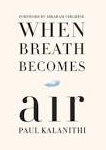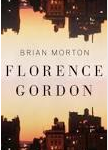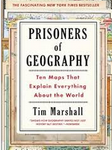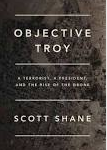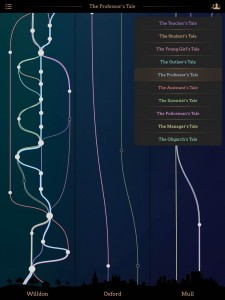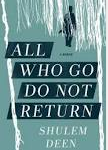Had I the heavens’ embroidered cloths . . .
I would spread the cloths under your feet
Paul Kalanathi, the son and nephew of doctors, was a double major in English lit and human biology at Stanford. When, at the age of 10, his family picked up and moved from leafy Westchester County, New York, to Arizona, his mother, worried about the local schools, acquired a college preparatory reading list and pushed her sons to read. It worked; Kalanathi says it “instilled in me a deep love of, and care for, language.” As a teenager he attempted to understand what makes human life meaningful in the face of inevitable death, searching both literature and his undergraduate neuroscience course material and experiences. Though not a materialist, he gave a great deal of thought to the difference and relationship between brain and mind, and what each contributes to the development of interpersonal relationships.
He continued to study, earning a master’s in English Lit and kept searching for a way to bring biology, morality, literature and philosophy together in his life’s work. Along the way he developed a taste for metaphysical verse. Kalanathi found the answer right in front of him, in medicine, and after medical school trained in neurosurgery and neuroscience. Kalanathi discovered he had Stage IV lung cancer just as he was finishing his training and planning the next stages of his life: a teaching position, children — he had married a fellow doctor at the end of medical school — and, eventually, time to write. Here’s Kalanathi’s description of his first transition, one of many remaining in his too-short life:
I received the plastic arm bracelet all patients wear, put on the familiar light blue hospital gown, walked past the nurses I knew by name, and was checked into a room . . .
A young nurse, one I hadn’t met, poked her head in.
“The doctor will be in soon.”
And with that, the future I had imagined, the one just about to be realized, the culmination of decades of striving, evaporated.
But I, being poor, have only my dreams
After an initial round of treatment Kalanathi was able to keep working for many months, then eventually the cancer became too much. He read, and pondered, and understood that he would not become the doctor he had hoped to be. Kalanathi went deeper than that, contemplating the possibility that the doctor he had hoped to be could never exist.
As a doctor, I had had some sense of what patients with life-changing illnesses faced–and it was exacctly these moments I had wanted to explore with them. Shouldn’t terminal illness, then, be the perfect gift to that young man who had wanted to understand death? . . . I’d had no idea how hard it would be . . . I’d always imagine the doctor’s work as something like connecting two pieces of railroad track, allowing a smooth journey for the patient. I hadn’t expected the prospect of facing my own mortality to be so disorienting, so dislocating
It’s as if, understanding that his life would not be long enough, Kalanathi moved through the compromises and acceptance of middle age while still in his thirties. Throughout, the writing is tender, precise, and beautiful. Each reader of this lyrical and deeply moving book, and I hope there are many, will have their own response to the questions Kalanathi faced.
I have spread my dreams under your feet;
Tread softly because you tread on my dreams.
Mine was to return to Yeats. Though Kalanathi’s life was poor in years, the life he describes was rich in everything else: the love of his family, including his wife, Lucy, who brought his manuscript to publication, a questing, active mind, and the birth of a daughter, to whom the book is dedicated.
by Alexandra Bowie
Follow me on Twitter @abowie917. Have a book you want me to know about? Email me at asbowie@gmail.com.

